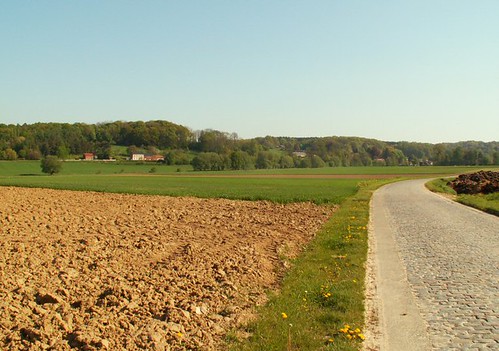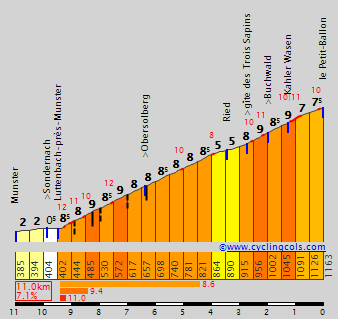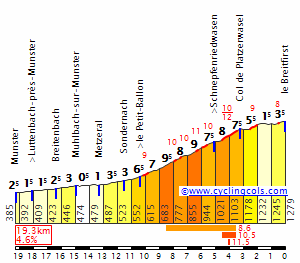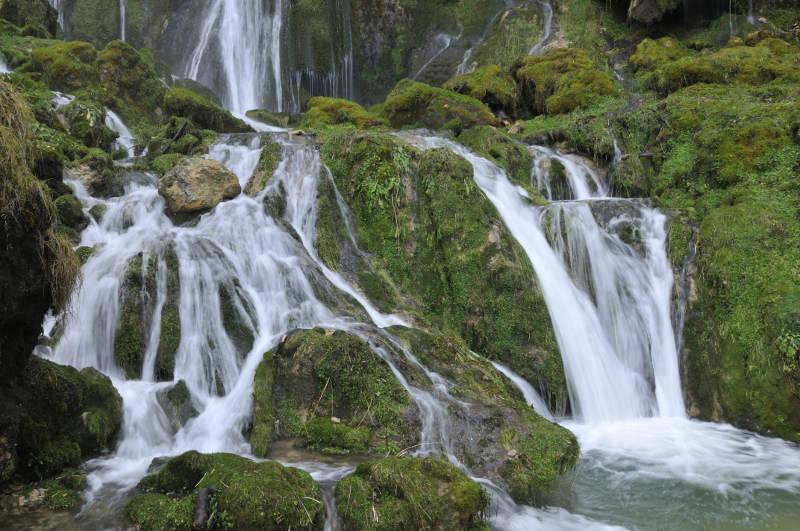Time for something unusual, as I've decided to submit the never-actually-submitted entrant for the Critérium International game - the game was still ongoing when the forum update made the Race Design Thread almost unusable (I've had a couple of periods away and have got very lax in my attempts to bring it back together, but I will do one day, I swear) so I never got around to submitting. I had two very different ideas in mind. The first was a standard Critérium International format, but it was going to take place in Oran, Algeria, since it is relatively accessible from most of Europe travel-wise, in my parallel cycling universe in which my races exist the Vuelta has recently had a successful start in Africa thanks to my Moroccan-starting Vuelta design, there are some small-to-medium sized hills around and I could have a hilly stage with a HTF/MTF at Station Bel Horizon and, crucially, in 1960 prior to decolonization of French Algeria, the city
actually hosted the Critérium International.
My other idea was a more experimental two-day race featuring a hectic but varied format in a European microstate. I was reminded of it by my post about Malbun in the thread about refreshing ideas with well-known climbs, and remapped it on cronoescalada. Andorra offers plenty of options but would be all mountainous, whereas here there is the possibility of some more variety in the stages offered even though the country is smaller. That's because this is a two day festival of cycling going by the name of
Liechtensteinrundfahrt. Although the total length of the race is very short (251km - trying to do it all within the borders of Liechtenstein isn't easy!) there's a lot of cycling crammed in to those two days and riders had better be versatile. The race would likely only be a Continental level type affair; like Andorra, Liechtenstein quite likes hosting cycling but doesn't really have much of a history of it themselves, with only a few Continental-level cyclists like Daniel Rinner to point at - though due to his family origins Stefan Küng is eligible to compete for Liechtenstein and the country did try to persuade him to in order to go to the Worlds while still a youngster - for obvious reasons of support and backing Küng preferred to continue with his birth country of Switzerland. The likely teams to show up would be the Swiss and Austrian Continental teams (Amplatz, Roth-Skoda, Tirol, Hrinkow Advarics, Felbermayr-Simplon Wels, Team Vorarlberg, WSA) plus some of the more adventurous Continental teams from Germany and Italy such as IDEA and GM, maybe Adria Mobil as well. More than a thimbleful of top level teams aren't too likely, though Bora, IAM and BMC would have reason to participate. Weaker Italian ProConti teams looking for Europe Tour points could arrive as well, such as Southeast. It wouldn't be a strong lineup but could potentially give an interesting race. Stages' conditions will be discussed with each stage.
Stage 1a: Vaduz - Vaduz, 63km
The first stage is on the Saturday morning, and consists of three laps of a 21km circuit which begins and ends - like much of the race - in the middle of the country's capital of Vaduz, outside
Kunstmuseum Liechtenstein, under the shadows of
Schloss Vaduz. It's a difficult, almost mountainous circuit, but the race is short. Each lap includes an ascent of the
Triesenberg (cat.2) climb, which is a not at all inconsiderable
4km @ 9,4% - it is a section of the Malbun climb that the country is famous to cycling fans for. Each climb tops out in the middle of the circuit, 10km from the finish, before an equally tricky descent into Triesen. As a cat.2 climb,
GPM points are 6, 4, 2 and 1 for the first 4 over the summit each time. At the line there are
bonus seconds: 3, 2 and 1 seconds at intermediates, 10, 6 and 4 at the finish. This will be one that's likely for climbers, but some tough versatile puncheurs could do this as well. Could be a solo attack on the climb or an elite group, but it's certainly not a bunch sprint as lots of legs will be fresh for attack in such a short stage.
Stage 1b: Ruggell - Balzers, 19,2km (EZF)
On Saturday afternoon the riders will head to the north of the country and undertake a TT which takes them from
Ruggell through Schaan (the most populous town in Liechtenstein) and Vaduz to
Balzers, at the south of the country. 19,2km may seem like a long ITT for a two day race (which it kind of is, especially when you consider it's longer than the country's normal national championships ITT!), but in view that the race is quite mountainous and I want the grand finale to have some excitement to it so time gaps are needed, a reasonable length seems fair.
Stage 1c: Vaduz - Vaduz, 60km
The riders' day is not over yet though - as the semitappe was so short, the ITT can be held in early afternoon, which means in the early evening, there's time for a third bit of racing on the day, as long as it's small and short. And this one will be short - barely over an hour's racing, because this will be a hard and fast criterium around Vaduz. All of the equipment, buses etc. can be parked at
the Rheinpark Stadion, the nation's tiny football ground (capacity 3500) while the start/finish will remain at the Kunstmuseum as with the morning semitappe. The riders undertake 18 laps of a 3,3km circuit for a total of 60km. Bonus seconds are generous in order to try to build up timegaps in the GC ahead of tomorrow. There are
6, 4 and 2 bonus seconds at the intermediate sprints after 5, 10 and 15 laps, while in the final sprint the first
six finishers will receive bonifications - of
10, 6, 4, 3, 2 and 1 seconds respectively.
After three stages on day 1, the riders can go to sleep calmly ahead of Sunday.
Stage 2a: Schaan - Schaan, 96km
Sunday morning's semitappe consists of 5 laps of a 19,2km circuit in the north of the country, beginning and ending in the centre of
Schaan. The circuit is mostly flat, but includes a short steep dig around halfway around the circuit to the hilltop village of
Schellenberg. This climb is around
1,6km @ 9% and is cat.3, this means
GPM points are 3, 2 and 1. It tops off 10km into the circuit, so 9,2km from the finish. The descent into Gamprin is fairly straight and not too steep, and then much of the run-in to Schaan is absolutely ramrod straight, so balancing this between the puncheurs and the more durable sprinters. Again, like stage 1a, the bonus seconds are the traditional ones:
3, 2 and 1 at intermediates, 10, 6 and 4 at the line. Having had two differing hilly stages (one intermediate mountain and one punchier) with traditional bonus seconds, a mid-length TT and a crit with very generous bonus seconds, we should have an interesting looking GC ahead of the grand finale...
Stage 2b: Vaduz - Malbun, 13,1km (Jagdrennen)
Early on Sunday afternoon, the riders will reconvene in front of the Kunstmuseum in Vaduz. A series of TT ramps will be lined up and riders will effectively take their grid spots for a mountaintop pursuit race to the only cat.1 climb of the race, a legitimate HC climb in reality, up to Liechtenstein's famous ski resort of
Malbun. Take off the first 200m through the town itself and you have this profile:
Yes, this is not going to be easy for any rouleur/puncheur types to defend their lead as we set off with a Nordic skiing-styled pursuit race, patterned after the Alpe Cermis pursuit race that serves as the finale to the Tour de Ski. It's a unique race on the calendar, sometimes rather gimmicky, but there can be no denying it offers spectacle. It also offers fans a chance to get live timing as the GPS can be complemented by transponders through intermediate checkpoints telling us who is chasing who and what time is being gained. These intermediates are at Schloss Vaduz (11,3km to go), Triesenberg (8,1km to go), the country's Nordic resort of Steg (3,3km to go) and Malbun Jugendheim (1,5km to go). The GPM points (and stage win) go to the fastest time set on the climb even if the rider wasn't the first across the line - they will be split
12, 8, 6, 4, 2 and 1. The order of finishing and the time gaps on this stage will be the eventual GC finishing order as, due to the handicap start, everybody will be in their GC positions at the beginning of the stage. Riders over 15 minutes down on GC after stage 2a will be given the choice of starting in a "wave" as is common in the Tour de Ski for stragglers to prevent people starting an hour down, long after fans have stopped caring, or electing to DNS. Drafting and tactical racing together to chase down a sole leader is allowed: it's still a bike race and unusual alliances are part of the game in a sport like Nordic Combined where every ski race follows this format.
Alpe Cermis pursuit
Malbun (2011 Tour de Suisse)


















































